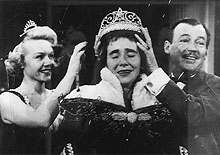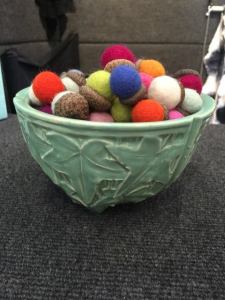Artists urge us to see the invisible, unnoticed beauty, and the important stuff of life.
I didn’t intend to write today.
I opened my journal, intending to try a new journaling technique I just read about. In flipping to the next blank page, I came across a note I’d written a few weeks ago. All it said was David Foster Wallace: This is Water
That’s it. Curious, and always open to an opportunity to procrastinate, I Googled it.
It’s about everything I’ve ever written about.
Of course, my lizard brain went, “Dang! Nothin’ left for me to write.” The angels of my better nature said, “Shut up and write. And then share it.”
Foster tells the story of two young fish passing by an old fish. The old fish says, “Mornin’, boys, how’s the water?” The younger fish continue on, til one turns to the other and says, “What the hell is water??”
Foster talks about a basic fact of life: We are the center of our own universe. After all, he notes, everything that happens everywhere is filtered through our eyes, our experience. He describes a typical experience: Grocery shopping after work. He outlines every single nuance of frustration and exasperation involved, from getting caught in traffic, shopping crowded aisles filled with slow people and whining kids, and ending up in the longest line at checkout. Who are these annoying, terrible people, and why are they ruining my day??!!
This isn’t bad, or evil, he reassures us. It’s natural. It’s ordinary. It’s human. It’s our default setting.
And yet….
We have something unique in us. We get to consciously choose what has meaning, and what doesn’t.
We all worship something, something not necessarily god-like. This, too, can bite us back. If we worship money and things, we will never feel like we have enough. If we worship our bodies and sexual appeal, we will always feel ugly. If we worship power and control, we will always feel afraid. If we worship our intellect, we will always feel stupid.
Real freedom, he says, comes from conscious choice. It involves attention. Awareness. Self-discipline. Effort. Caring for, and sacrificing for others.
That awareness comes from seeing what is real and essential, hidden in plain sight.
“This is water.”
I instantly realized, this is what artists are for.
When I say to you, “Yes, making money from art is nice. But that’s not the whole reason we do it.”
When I say, “When we have a creative gift, it’s our responsibility to bring it forth.”
When I say, “We can’t judge the work we do. We just need to get it out there in the world.”
When I was told, “The world needs your art”, I felt ‘the call’.
When I say, “Art is more than just what it does for you. It’s what it does for others.”
All of this, and more….What I’m really saying is this:
Art and creative work helps us see water.
This is why we must make the work that is unique to us–not what’s trendy and fashionable.
This is why measuring ourselves with fame and wealth is a sure way to kill our creative spirit.
This is why trying to control our legacy creates a disconnect with our rich inner life.
Bringing our creative work into the world involves the same conscious decisions: Attention. Awareness. Self-discipline. Effort. Caring for others. Sacrificing for others. (I’m still wrapping my head around that last one, I can almost get it, but can’t articulate it. Another article??)
First art heals us. When we share it with the world, then it can heal others.
Sadly, Wallace suffered from severe depression, and committed suicide in 2008. Sometimes the angry, frightened voices in our head cannot be silenced. But he left us with beautiful words, and powerful ideas. He got them out into the world so that you and I can flourish.
He helped us see water.



 But the day that my priority is to do dishes and laundry and check email is the day I officially declare myself housewife of the year. (Please. No. Remember that 50’s TV show,
But the day that my priority is to do dishes and laundry and check email is the day I officially declare myself housewife of the year. (Please. No. Remember that 50’s TV show, 





